This week at the Plant Clinic we had a question about identification of a native bee. Rosalie, a Master Gardener, wrote up an article about some of the native bees found in Florida as a response.
Pollinators are essential to our world. Bees, butterflies, hummingbirds, moths, wasps, flies, beetles, plus some bats, are just some of the animals that move pollen between flowers; enabling them to produce seeds. Between them, these pollinating animals provide pollination necessary for the reproduction of over 85% of the world’s flowering plants.
These pollinators are also indispensable to human life and are essential for pollinating more than one hundred crops in the USA, such as apples, blueberries, and pumpkins. Were these pollinators to disappear, only wind-pollinated crops such as corn and wheat would remain (ref 1). Florida is home to over 300 different native bees, and all of them have differing habitat requirements and nesting requirements. Below you can read about some of the more common native bees.
Meet The Native Bees

1. Bumble Bee
Bumble Bees are large, fuzzy, and noisy native bees who can travel great distances in search of nectar. They live in colonies and use abandoned rodent burrows and nests. They can also be found in upside down flower pots or beneath boards.
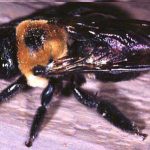
2. Large Carpenter Bee
Large Carpenter Bees resemble bumble bees but have a white, glossy abdomen with colors varying from yellow and black to all black. They utilize soft dead wood, poplar, cottonwood, or willow trunks and limbs to create their nests.
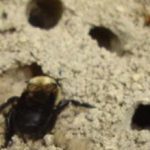
3. Digger Bee/Miner Bee
Digger Bees or Miner Bees are solitary ground nesting bees that resemble the European honey bee in shape and size. They live in dry, exposed, well drained soils, and can be found alongside the banks of waterways. These bees will often construct their nests in large numbers next to one another at a given site. Each female mines out a cylindrical hole to raise her offspring.
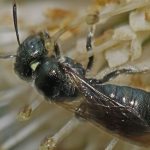
4. Small Carpenter Bee
Small Carpenter Bees are about 1/3 the size of carpenter bees with black, blue-green, or blue with white or yellow markings. They can be found inside of rose and blackberry canes and will excavate nests in twigs and stems for the females to overwinter in.
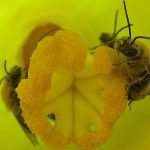
5. Squash/Gourd Bee
Squash and Gourd bees are the hippy cousins of European honey bees, with large patches of fuzz on their legs that looks a little like bell bottoms. This fuzz is used to collect the large pollen grains from their favored plants. The females nest in pumpkin, squash, and gourd gardens around the base of plants while males shelter in flowers overnight. They gather pollen exclusively from squash, pumpkins, and similar cucurbits.

6. Leafcutter Bee
Leafcutter Bees are of a size with European honeybees, but fuzzier so they can carry more pollen. They tend to live in pre-existing circular tunnels in dead wood, but some will nest on the ground. Adult females live only two months, but are important pollinators of native plants. These bees will cut circular holes in the margins of leaves to use for their nests.
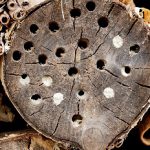
7. Mason Bee
Mason Bees are shiny black bees which live in similar habitat to the leafcutter bees. These bees will also use human-made nesting boxes or drilled woods. We will cover how to make native bee houses in another article!
8. Sweat Bee
Sweat Bees are brilliant iridescent colors of green, blue, red, or brown, and male sweat bees have yellow faces. These are solitary ground nesting bees that prefer areas free of vegetation. They are called sweat bees because of their attraction to human sweat. These bees are important pollinators of flowering fruit and seed plants.
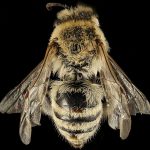
9. Plastered/Cellophane Bee
Plastered or Cellophane Bees are fuzzy bees of a size with European Honeybees. These bees are called cellophane bees because they waterproof their nests with a material very similar to plastic, which allows them to build nests near riverbanks. They prefer areas free of vegetation near banks or cliffs.

10. Orchard Mason Bee
Orchard Mason Bees are usually metallic blue or green and carry pollen on their abdomens. They tunnel in wood or other cavities and cap their nests with mud.
11. Orchid Bee
Orchid Bees are not a true native bee, but have naturalized in Florida from Mexico and Central America. They are a metallic green in color and will collect resin to construct their nests. They can sonicate (provide buzz pollination) and are thought to be a future major pollinator in South Florida.
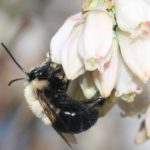
12. Southeastern Blueberry Bee
Southeastern Blueberry Bees look like small bumble bees and are solitary, ground-nesting bees. They are important pollinators of blueberries as their buzz pollination releases plenty of pollen from the berry flowers – while European Honeybees will often eat through petals to get to nectar, leaving flowers unpollinated.
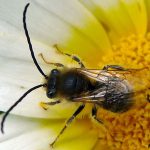
13. Long-Horned Bee
Long-Horned Bees are large, dark, fuzzy bees and males may have antennae as long as their bodies. They are solitary bees which are often seen among native grasses in woodlands or scrublands. (ref 3)
As you can see, there is plenty of buzz in your garden, even if it isn’t all European Honey Bees. You can read more about all of these bees, and plenty of other bugs, at The University of Florida’s Featured Creatures website, run by the Entomology and Nematology Department. Creating areas where these native bees can build their nests is important if we want continued pollination of our many food crops and ornamental crops!
Ref 1. The Xerces Society for Invertebrate Conservation. (April 2012)
Ref 2. Logan Lee, Prairie Supervisor, Midewin National Tallgrass Prairie
Ref 3. Bee Basics: An Introduction to Our Native Bees, by Beatriz Moisset. Ph.D. and Stephen Buchmann. Ph.D.
Contact the Plant Clinic
The Seminole County Master Gardener Plant Clinic is open Monday – Friday from 9am-Noon and 1pm-4pm. For more information on how to contact a Master Gardener about your gardening questions, visit our website at this [LINK].
 0
0
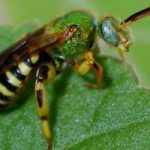
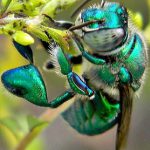

Comments are closed.